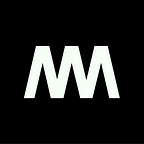Art of Retail: Pop-Up Shops as an IRL Cloud for Brands
Physical Stores: A Fading, if Alluring, Technology
Even as they’re being erased from our cities, we tend to take stores for granted. What’s a store? They’re places we go to buy stuff. Duh. But that seemingly self-evident answer — we have to go to someplace that’s forever stuck in place—reveals the obvious fact that stores are becoming an obsolete technology. Which is why we may lament their disappearance but recognize its inevitability.
The internet, after all, is much more malleable. You don’t even need to leave your house, or even your couch, to buy all the stuff. Meanwhile, as a seller of stuff, you can bring your store to the couches of people everywhere. Holy moly! You can even customize the store just for them! In such a light, a physical store seems comically antiquated.
And yet it’s an undeniable pleasure to peruse in person. To walk into a crafted experience where the stuff is laid out just so for your eyes, hands, ears, nose, (usually no tongue involved), to assess and enjoy. To give the avocado that impossibly gentle squeeze that tells you all you need to know. To slip into that pair of pants and feel the fabric, gauge the cut and color and how it all comports with your particular particularity. If only there were another technology, a way for stores to exist and yet not be so constrained by physical structures…
Pop-Ups Emerge as a New Retail Technology
Turns out pop-up shops are an old technology, too. They’re first noted in 1298 in Vienna seasonal markets. We know them, too, from fairs and farmer’s markets where sellers temporarily set up shop, hock their stuff, and disappear.
Most histories of pop-ups reference The Ritual Expo as the adoption propellent. The 1997 Los Angeles event gathered food, music, and fashion into what has been called the “ultimate hipster mall.” Soon, brands were launching their own pop-ups across the country. Restaurants quickly adopted the technology, too, setting up in kitchens in different places before disappearing once again into the ether.
Since then, we’ve seen a veritable explosion of luxury brands deploying immersive pop-up environments. In 2022, Balenciaga traveled the world with a (faux) furry pink shop where you could literally pet the walls. Jacquemus has enthusiastically embraced the technology with a series of often surreal pop-ups around the world. Last year in Paris, the brand temporarily took over the Galeries Lafayette to create a wildly immersive experience that included photo booth in a washing machine; a 24-hour vending machine selling handbags; flowers and coffee galore; a giant handbag—and a giant toaster.
Pop-ups give brands the freedom their flagship stores simply can’t. Most notably, perhaps, it allows them to bring their goods as well as their brand experience to you—kinda like the internet only more tactile. And it lets brands play, to create immersive environments that may be impossible to maintain over time but which create explosive experiences to wow their customers while extending—and performing—their brand in new ways.
Pop-Ups are the IRL Brand Cloud
Pop-ups are a cloud of physical space. Think about it: the brand is the software that can be accessed from any screen-cum-store. The particular store doesn’t matter. The brand shows up on whatever screen. It’s the software, the application, no longer tethered to a fixed structure. Where retail has always been on prem, the pop-up makes brand retail serverless.
It’s a technology with benefits galore for brands. It’s agile, able to pop up as needed. A seasonal restaurant? No problem: open for Fall, shutter for the rest of the year. (The Icehotel in Sweden may be the most spectacular seasonal pop-up.) A new product line? Why be limited to existing stores? Hock those wares anywhere. Want to reach, or at least test, new markets? Try Paris for a week, Sydney for another, Caracas the week after.
And it means being able to extend your brand in new ways. A pop-up lets you introduce new brand elements, leaning into a different look and feel, a different mode of expression, without compromising existing brand assets. More and more, we see brands launching pop-ups as immersive experiences that would be difficult, if not absurd, to maintain year round. Imagine if all Balenciaga shops were furry pink palaces all the time? It would make shopping there regularly a tad trying (not to mention working there day in and day out). The pop-up lets the brand flex, creating a deep immersive experience that augments, extends, and inflects the main brand.
As we move faster into the metaverse, pop-ups allow digital brands—with or without physical products—to avoid long leases and real estate upkeep. We’re seeing this in Web3 brands such as ZERO10 which opened a pop-up in New York’s Soho that gave customers an IRL experience, even without selling any goods. HBX partnered with Coinbase on a pop-up that featured an NFT gallery, screen printing, and crypto shopping. In 2022, during NFT NYC, Metamask and FELT Zine hosted an art pop-up at a disco where folks meeted, greeted, and danced.
What’s so refreshing about pop-ups is precisely that they’re refreshing—always new and, usually, vibrant. They transform our city stores into blank canvases, (more or less) readily washed clean for the next experience.
mmERCH is Neo-Couture. We code, cut, and curate luxury apparel where every piece is 1-of-1-of-x, linking art and fashion across the digital, physical, and virtual. The Juice Box is where we discuss the history, future, and philosophy of Neo-Couture. Visit mmERCH >
